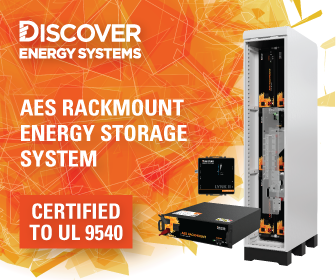nanoFlowcell Presents Milestone Plan Ahead of Stock Market Flotation
Research and development company nanoFlowcell Holdings and its investors have agreed the company's Milestone Plan for the next five years. The central element of the plan is to attain a status of market maturity for the nanoFlowcell technology. The Milestone Plan for the next five years is aimed at demonstrating to interested parties in the industrial sector large-scale production of the nanoFlowcell membrane technology and the bi-ION electrolytes. To achieve this, nanoFlowcell Holdings is planning the construction of a globally unique innovation centre called QUANT-City.
The key projects within the nanoFlowcell Holdings Milestone Plan are:
- Construct a production facility for the flow cell and the bi-ION electrolytes
- Build a pilot production facility for QUANT low-voltage electric vehicles
- Build an Innovation Lab to map the value-creation process from application research to application development
- Stock-market flotation of nanoFlowcell Holdings
Nunzio La Vecchia, Chief Technology Officer for nanoFlowcell Holdings Ltd, explains: "Over the last few months, we have succeeded in providing an impressive demonstration of the functionality of our nanoFlowcell technology with the aid of our QUANTiNO 48VOLT and QUANT 48VOLT test vehicles. However, we have yet to prove that our nanoFlowcell system is also suitable for volume production. We can and will do this."
bi-ION Production
La Vecchia continues: "We have been working for some time on the development of a mass production system for our bi-ION electrolytes, having long been able to produce the electrolytes in the lab. We have now successfully developed a production process that will smooth the way to producing the electrolytes on an industrial scale. Ultimately, the market success of our technology will depend on this."
The company's aim is to work with partners to build a pilot facility that enables reproducible production and quality standards. It will serve to demonstrate the industrial-scale production of bi-ION and as a template for bi-ION production facilities to be built internationally. The initial planning stages anticipate daily production of two million litres of bi-ION electrolyte liquid, which currently equates to 1.2 MW of energy. Production can then be scaled up as required to cover regional bi-ION needs for mobile (nanoFlowcell electric vehicles) and stationary (generators, off-grid energy supply) consumers.
In terms of terrestrial applications, there are plans for stationary nanoFlowcell power stations (on a megawatt scale) powered on a sustainable and environmentally compatible basis by bi-ION. This is where La Vecchia sees major development potential for his company to offer energy leasing through energy supplies from nanoFlowcell power stations. The establishment of an energy insurance network means leasing partners could also be offered insurance against energy outages. This is a completely new concept on the energy market and very much in keeping with the company's innovative thinking.
Production of QUANT 48VOLT and QUANTiNO 48VOLT
Application-driven marketing of the nanoFlowcell 48VOLT low-voltage drive technology will initially be through operating an international QUANT test fleet of QUANT 48VOLT and QUANTiNO 48VOLT electric vehicles. To achieve this, the company is establishing low-volume production on a CKD (complete knock-down) basis). "Series zero" production is part of the process to further develop the logistics and quality processes as well as series-production methods for flow-cell-powered electric vehicles. Production development and operation of the the QUANT test fleet will be managed together with international partners. Advance orders of around 25,000 QUANTiNO 48VOLT and 500 QUANT 48VOLT vehicles have already been placed.
nanoFlowcell Holdings will also push forward with the global homologation of its QUANT models in order to offer technology licences on an international basis.
Innovation Labs
A further component of the innovation centre is the establishment of an Innovation Lab in which the development, production and use of new flow-cell applications can be simulated and tested. It will facilitate reproduction of the entire nanoFlowcell technology value chain for individual industrial sectors. Innovation Labs like this will address the regional demands of flow-cell applications or will conduct industry-oriented application research and development. nanoFlowcell Holdings sees enormous potential for the flow cell, not just as an energy supplier for electric cars, but also for rail vehicles, as secondary energy sources for aircraft and ships, and as stationary energy carriers for on-grid or off-grid energy supply to buildings and industrial facilities.
QUANT-City
Production of the nanoFlowcell (the flow cell itself, including the membrane), bi-ION production, application production and the Innovation Labs will be integrated within a single facility. Known internally as QUANT-City, it will also function as a pilot project for replicating the wide range of necessary services - from complete supply and disposal management, to logistics services, engineering and facility management. The experience with this project, from the planning to the operation of QUANT-City, will help in the development and implementation of it as a plug & play facility for other international locations.
Stock Market Flotation
In respect of a possible stock market flotation, La Veccia says: "Our plans in the past have already included the stock market flotation of nanoFlowcell Holdings as a possible option for the corporate development of nanoFlowcell. We have had to defer this to-date as our investors first required us to develop standardised processes for the industrialised production of our electrolytes. This is critical to the market success of the nanoFlowcell technology and, ultimately, our company. The process for mass producing bi-ION has now been developed, meaning a corresponding facility can be built. There is now nothing left to obstruct the market success of the nanoFlowcell."
nanoFlowcell Holdings anticipates, and has incorporated into its corporate development plan, possible consequences resulting from a stock market flotation, particularly in respect of securing its IP rights. Furthermore, broader market capitalisation would also help raise the profile of the nanoFlowcell technology and boost the reputation of the company and its technology. La Veccia stresses that the stock market flotation is not the result of financial necessity, as the operating business of the research and development company is financially secured for several years to come. This also includes investments in the QUANT-City pilot project, which nanoFlowcell Holdings is able to implement without borrowing. nanoFlowcell Holdings currently operates debt-free.
nanoFlowcell | www.nanoflowcell.com











